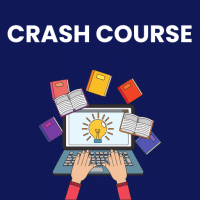B.Ed Entrance Exam > B.Ed Entrance Questions > What is one of the key steps in the reflectiv...
Start Learning for Free
What is one of the key steps in the reflective level of teaching as outlined by Hunt?
- a)Memorizing facts and figures.
- b)Creating a problematic situation.
- c)Conducting standardized tests.
- d)Following a rigid curriculum.
Correct answer is option 'B'. Can you explain this answer?
Verified Answer
What is one of the key steps in the reflective level of teaching as ou...
One of the key steps in the reflective level of teaching, as outlined by Hunt, is the process of creating a problematic situation. This step involves setting the stage for students to engage with challenging scenarios or questions that require thoughtful analysis and problem-solving skills. By creating a problematic situation, educators aim to stimulate students' critical thinking abilities and encourage them to explore solutions independently.
View all questions of this test
Most Upvoted Answer
What is one of the key steps in the reflective level of teaching as ou...
Understanding the Reflective Level of Teaching
In the context of Hunt's framework for teaching, the reflective level emphasizes deeper engagement and critical thinking among educators and students. This level encourages teachers to foster an environment where students can analyze, evaluate, and create based on their learning experiences.
Key Step: Creating a Problematic Situation
- Encourages Critical Thinking: By presenting students with a problematic situation, teachers stimulate critical thinking. This approach pushes students to analyze the problem, consider various perspectives, and formulate potential solutions.
- Promotes Active Learning: Problematic situations require active participation from students. Instead of passively receiving information, students engage in discussions, collaborations, and hands-on activities that enhance their understanding.
- Facilitates Reflection: Encountering a challenge encourages students to reflect on their prior knowledge and experiences. This reflection fosters a deeper understanding of the subject matter and allows for personal growth.
- Builds Problem-Solving Skills: Engaging with real-world problems helps students develop essential skills like problem-solving, decision-making, and critical analysis, which are valuable both academically and in everyday life.
Conclusion
In summary, creating a problematic situation is a crucial step in the reflective level of teaching. It transforms the classroom into a dynamic environment where students are empowered to think critically and develop important life skills. This approach stands in contrast to rote memorization or rigid adherence to a curriculum, making learning a more meaningful and engaging process.
In the context of Hunt's framework for teaching, the reflective level emphasizes deeper engagement and critical thinking among educators and students. This level encourages teachers to foster an environment where students can analyze, evaluate, and create based on their learning experiences.
Key Step: Creating a Problematic Situation
- Encourages Critical Thinking: By presenting students with a problematic situation, teachers stimulate critical thinking. This approach pushes students to analyze the problem, consider various perspectives, and formulate potential solutions.
- Promotes Active Learning: Problematic situations require active participation from students. Instead of passively receiving information, students engage in discussions, collaborations, and hands-on activities that enhance their understanding.
- Facilitates Reflection: Encountering a challenge encourages students to reflect on their prior knowledge and experiences. This reflection fosters a deeper understanding of the subject matter and allows for personal growth.
- Builds Problem-Solving Skills: Engaging with real-world problems helps students develop essential skills like problem-solving, decision-making, and critical analysis, which are valuable both academically and in everyday life.
Conclusion
In summary, creating a problematic situation is a crucial step in the reflective level of teaching. It transforms the classroom into a dynamic environment where students are empowered to think critically and develop important life skills. This approach stands in contrast to rote memorization or rigid adherence to a curriculum, making learning a more meaningful and engaging process.

|
Explore Courses for B.Ed Entrance exam
|

|
Question Description
What is one of the key steps in the reflective level of teaching as outlined by Hunt?a)Memorizing facts and figures.b)Creating a problematic situation.c)Conducting standardized tests.d)Following a rigid curriculum.Correct answer is option 'B'. Can you explain this answer? for B.Ed Entrance 2025 is part of B.Ed Entrance preparation. The Question and answers have been prepared according to the B.Ed Entrance exam syllabus. Information about What is one of the key steps in the reflective level of teaching as outlined by Hunt?a)Memorizing facts and figures.b)Creating a problematic situation.c)Conducting standardized tests.d)Following a rigid curriculum.Correct answer is option 'B'. Can you explain this answer? covers all topics & solutions for B.Ed Entrance 2025 Exam. Find important definitions, questions, meanings, examples, exercises and tests below for What is one of the key steps in the reflective level of teaching as outlined by Hunt?a)Memorizing facts and figures.b)Creating a problematic situation.c)Conducting standardized tests.d)Following a rigid curriculum.Correct answer is option 'B'. Can you explain this answer?.
What is one of the key steps in the reflective level of teaching as outlined by Hunt?a)Memorizing facts and figures.b)Creating a problematic situation.c)Conducting standardized tests.d)Following a rigid curriculum.Correct answer is option 'B'. Can you explain this answer? for B.Ed Entrance 2025 is part of B.Ed Entrance preparation. The Question and answers have been prepared according to the B.Ed Entrance exam syllabus. Information about What is one of the key steps in the reflective level of teaching as outlined by Hunt?a)Memorizing facts and figures.b)Creating a problematic situation.c)Conducting standardized tests.d)Following a rigid curriculum.Correct answer is option 'B'. Can you explain this answer? covers all topics & solutions for B.Ed Entrance 2025 Exam. Find important definitions, questions, meanings, examples, exercises and tests below for What is one of the key steps in the reflective level of teaching as outlined by Hunt?a)Memorizing facts and figures.b)Creating a problematic situation.c)Conducting standardized tests.d)Following a rigid curriculum.Correct answer is option 'B'. Can you explain this answer?.
Solutions for What is one of the key steps in the reflective level of teaching as outlined by Hunt?a)Memorizing facts and figures.b)Creating a problematic situation.c)Conducting standardized tests.d)Following a rigid curriculum.Correct answer is option 'B'. Can you explain this answer? in English & in Hindi are available as part of our courses for B.Ed Entrance.
Download more important topics, notes, lectures and mock test series for B.Ed Entrance Exam by signing up for free.
Here you can find the meaning of What is one of the key steps in the reflective level of teaching as outlined by Hunt?a)Memorizing facts and figures.b)Creating a problematic situation.c)Conducting standardized tests.d)Following a rigid curriculum.Correct answer is option 'B'. Can you explain this answer? defined & explained in the simplest way possible. Besides giving the explanation of
What is one of the key steps in the reflective level of teaching as outlined by Hunt?a)Memorizing facts and figures.b)Creating a problematic situation.c)Conducting standardized tests.d)Following a rigid curriculum.Correct answer is option 'B'. Can you explain this answer?, a detailed solution for What is one of the key steps in the reflective level of teaching as outlined by Hunt?a)Memorizing facts and figures.b)Creating a problematic situation.c)Conducting standardized tests.d)Following a rigid curriculum.Correct answer is option 'B'. Can you explain this answer? has been provided alongside types of What is one of the key steps in the reflective level of teaching as outlined by Hunt?a)Memorizing facts and figures.b)Creating a problematic situation.c)Conducting standardized tests.d)Following a rigid curriculum.Correct answer is option 'B'. Can you explain this answer? theory, EduRev gives you an
ample number of questions to practice What is one of the key steps in the reflective level of teaching as outlined by Hunt?a)Memorizing facts and figures.b)Creating a problematic situation.c)Conducting standardized tests.d)Following a rigid curriculum.Correct answer is option 'B'. Can you explain this answer? tests, examples and also practice B.Ed Entrance tests.

|
Explore Courses for B.Ed Entrance exam
|

|
Signup for Free!
Signup to see your scores go up within 7 days! Learn & Practice with 1000+ FREE Notes, Videos & Tests.


















